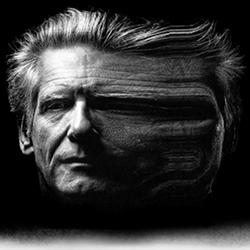
TIFF’s With Blood On His Hands – The Films of Nicolas Winding Refn Review: Pusher II (2004)

Cast: Mads Mikkelsen, Leif Sylvester, Anne Sørensen
Director: Nicolas Winding Refn
Country: Denmark | UK
Genre: Action | Crime | Drama | Thriller
Editor’s Notes: The following review is part of our coverage for TIFF’s With Blood On His Hands – The Films of Nicolas Winding Refn which runs from October 24th to November 5th at TIFF Bell Lightbox. For more information on upcoming TIFF film series visit http://tiff.net and follow TIFF on Twitter at @TIFF_NET.
Significantly improving upon Pusher (1996), his first feature film—and first of the trilogy—Nicolas Winding Refn uses Pusher II (2004) to demonstrate his natural talent for storytelling, character development, and psychological exploration. While these elements are perceptible only intermittently in previous films, Refn’s complete authorial voice is present here. From beginning to end, Pusher II is an unrelenting tour de force of striking camera movements, superb acting, and an encapsulating script; it is ultimately a consistent and well-paced exercise of narration.
Significantly improving upon Pusher (1996), his first feature film—and first of the trilogy—Nicolas Winding Refn uses Pusher II (2004) to demonstrate his natural talent for storytelling, character development, and psychological exploration.
While the character is featured in the first half of Pusher, Mads Mikkelson’s Tonny—just released from prison—is given the starring role in this sequel. A much more charismatic actor than Kim Bodnia, who does a fine job in his starring role as Frank, Mikkelson brings an added dimension to the criminal underworld being illustrated in the film. A man of incredible versatility, Mikkelson’s ability to effortlessly convey a wide range of emotions—fear, sadness, contemplation, anger, etc.—keeps the viewer completely immersed in his performance, and by extension the film as a whole. The highly erratic character of Tonny is given an incredible sense of energy and immediacy through the juxtaposition of Mikkelson’s lightning performance and Refn’s now expertly honed camera style.

With a long opening take of a prison inmate giving Tonny a speech about setting precedence for oneself in order to dispel of one’s fears, Winding’s film sets a firm introduction to frame the unfolding script and character development. After an especially fluid crane shot of Mikkelson running around the prison yard in defence of those he just attacked, he is released from prison and sets about to uplift his reputation. Visiting his father, the Duke, the head of a car theft organization posturing as an automotive repair shop, Tonny makes an effort to get back in his good graces. Following Tonny, Refn explores changes in his psychological state as he finds himself facing problem after problem. His drug and alcohol addiction worsening as he plummets into desperation, Tonny’s pressures—his father, his son, his supposed friends—eat at his core until a final outburst of violence, leaving blood on his hands, shows what he is truly capable of. Subsequent to this horrific act, Tonny leaves town by bus with his baby in hands; what he is to face is unclear, and his fate is as uncertain as Frank’s was in the first feature.
Focusing ever more deeply on the intricate qualities of his characters, Refn uses Pusher II to establish his aptitude for emotionally contextualizing his characters. While the action and plot development is just as well defined as before, the characters—particularly Tonny—are given a certain degree of relatability that is perhaps missing in his previous works.
Adding to this degree of relatability is Refn’s stylistic camera movement which now lends itself to finely illustrating the psychological dimensions of the characters it captures.
Adding to this degree of relatability is Refn’s stylistic camera movement which now lends itself to finely illustrating the psychological dimensions of the characters it captures. In several scenes, the fluid, somewhat quick, always well-choreographed crane movements provide the film with an exhilarating sense of energy and vitality which appreciably complement the subject matter. For example, in a scene where Tonny’s father follows him with a crowbar after he ignorantly steals a hot Ferrari, the camera weaves about as Tonny walks away slowly but carefully. Ducking between objects while his father looms closer, tension is built by the somewhat obstructed camera. Not knowing whether his father will catch him or not, and not knowing what he will do if he does catch him, the viewer’s pulse races with empathetic fear for Tony’s security. In a similar manner, camera movements in close up elide much of what is around the central character in each of the action sequences. What is most notable is how Refn chooses to film the car scenes; the editing of these scenes foreshadows what would come in his feature film Drive (2011): a continuous and rhythmic perpetuation of motion.
Though he rarely displays the exact same shot twice—continually altering the framing to inscribe vitality in the picture—Refn’s editing cuts retain continuity with an almost Malickian resolve. While not jarring, the scenes are lent a generation and regeneration of life as if one’s sense of becoming and changing is reflected in activities found in one’s life. As a result, the psychological depictment of Tonny is at once complemented by the stylistic impulses of Refn’s formal rhetoric.
Finally, what is perhaps most notable in Pusher II is Refn’s use of sound effects and music. While the soundtrack plays a part in each of Refn’s films, it is perhaps most integral here. With a pulsating bass line and electronic effects, the soundtrack of most scenes is a perfect iteration of the visual style. With several trance, metal, and techno songs, including the theme song from Alan Parker’s classic Midnight Express (1978), Pusher II’s soundtrack is amongst the very best.
The unrelenting rhythmic pattern of this kind of music matches the unrelenting pace of Refn’s camera movement and editing. Forming a synthesis between sound and image, the film ceaselessly drives its themes into the hearts of its viewers.
Related Posts
![]()
Kamran Ahmed
![]()
Latest posts by Kamran Ahmed (see all)





























